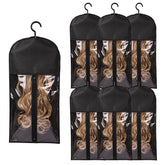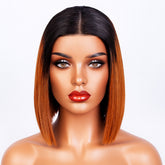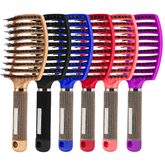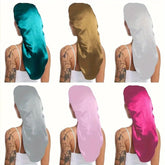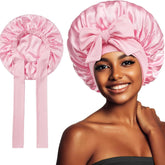How a Top Stylist Says You’re Using Hair Products Wrong

Many of us reach for serums, sprays and creams with confidence — yet a top stylist speaking to GB News warns that common habits are undermining results. Small missteps in the order of application, how much you use and when you apply heat protection can change how a product performs and how healthy your hair looks. This guide pulls together practical, expert-led insight so you can get better results from the products already on your shelf.
Order matters: the right sequence for maximum effect
One of the most consistent pieces of advice from professionals is that product order affects performance. Think about layering like dressing: lighter, water-based formulas first, heavier oils and creams last. Applying a heavy oil before a leave-in cream can prevent that cream from penetrating; conversely, a lightweight mousse or leave-in conditioner can distribute more evenly when applied to damp hair ahead of a styling serum.
General guidance from stylists often looks like this:
- Start post-wash with a leave-in conditioner or detangler on damp hair.
- Follow with heat protectant if you plan to blow-dry or use heated tools.
- Apply mousse or volumising products nearer the roots if you want lift.
- Finish with oil or serum on mid-lengths and ends to add shine and seal cuticles.
Less is often more: how much to use and where to put it
Another frequent error is over-application. Many products are highly concentrated: a pea-sized amount of serum can be enough for shoulder-length hair, while longer hair may need a little more. The key is to focus on mid-lengths and ends rather than the scalp unless a product is specifically formulated for roots (such as certain scalp serums).
Applying grease-like products at the roots can make hair look limp and require more frequent washing, which can strip natural oils. Instead, distribute styling creams and oils by warming the product between your palms and running them down the lengths of your hair with a comb or fingers. For sprays, hold the can the recommended distance from hair to ensure fine, even coverage.
Heat protection and timing: when to apply and why it matters
Using a heat protectant is non-negotiable if you use heated tools. However, timing changes everything. A heat protectant should be applied to damp hair and allowed to dry slightly — or incorporated into your blow-drying routine — rather than being sprayed on immediately before a hot iron. This helps the protective ingredients form an even film over the hair shaft.
Similarly, many people skip leave-in conditioners because they plan to use styling products later. In practice, a lightweight leave-in protects and hydrates, creating a better base for styling products and reducing friction damage during heat styling.
Simple step-by-step routine to try tonight
- Wash with a gentle shampoo and condition the mid-lengths and ends.
- Towel-dry by blotting rather than rubbing to reduce breakage.
- Apply a pea-sized amount of leave-in conditioner or detangler on damp hair.
- Dispense a heat protectant — spray or pump — and comb through from roots to ends.
- If using styling creams or mousses, apply to the relevant section (roots for volume, lengths for control).
- Dry and style using the appropriate tool, then finish with a tiny amount of serum on the ends for shine.
Practical adjustments for common hair concerns
Different textures and concerns need tailored tweaks. Fine hair benefits from lighter, water-based formulas and minimal oil; thicker, coarser textures often respond well to richer creams and oils that smooth and seal. For colour-treated hair, look for products labelled colour-protecting and avoid high-clarity alcohols that can strip pigments.
Scalp-care products deserve their own routine: apply scalp serums directly to the roots and massage gently to promote circulation, but avoid heavy residue that could block follicles.
Takeaway
Small changes — the order you layer, the amount you use and the timing of heat protection — can make a big difference. A top stylist’s reminder isn’t about more products; it’s about smarter use. By following a clear sequence, targeting mid-lengths and ends, and respecting heat-protection steps, you’ll see better texture, longevity and shine from the products you already own.
More From the Experts: Read interviews and insights from stylists and professionals on Hairporium Expert Articles.

